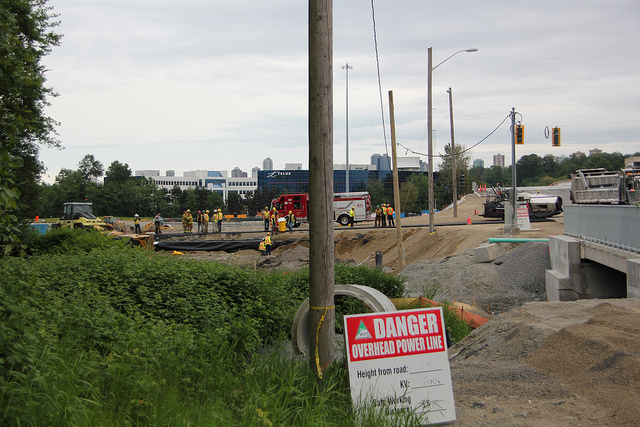- Part 1: What is a hardnosed worker?
- Part 2: What should I not do when I want to change a hardnosed worker?
- Part 3: What should I do in order to change hardnosed workers?
- Part 4: What results can be expected from a training program tailored to a hardnosed work force?
T-JTA Profile For Managers & Supervisors Figure 1
 The findings for the 126 managers are nearly identical to those of supervisors, including scores of "improvement desirable" in the same 5 traits listed above and "acceptable" in the other 4 traits. Three of the five trait scores for managers are numerically identical to those of supervisors. The variance between manager and supervisor scores is only 3 percentage points (out of a possible 100) in 4 out of the 9 traits. The variance never exceeds 10 points on any trait, indicating that the conclusions for managers can be considered the same as those for supervisors.
Interpretation
What the findings from the T-JTA tell us about the personality profile of a hardnosed manager or supervisor, and, collectively, a change-resistant workforce, is the following:
1. A stereotype may be accurately assumed.
A change-resistant workforce is marked by nearly identical personality profiles of its managers and supervisors — in other words, it is inbred in its personality patterns.
2. The ability to command is a strength.
The "acceptable" personality trait scores are those that support behavioral tendencies which indicate the practice of strong command skills. In particular traits F (objective), G (dominant) and I (self-disciplined) would be expected to be strong in those who displayed good command capabilities.
3. The ability to communicate on a positive basis is a weakness.
The "improvement desirable" personality trait scores are those that support behavioral tendencies which foster inward feelings and communication which is either consistently critical, argumentative, or absent. In particular traits D (inhibited), E (indifferent) and H (hostile) would be expected to be weak in those who suffered the inability to communicate on an open, friendly or non-hostile basis.
4. A tendency to emotionally withdraw creates masking (emotional honesty) concerns.
The change-resistant worker may have a tendency to mask his feelings and thus give verbal feedback which is either intentionally or unintentionally not indicative of his true feelings. Psychological Publications, Inc., publishers of the T-JTA, include several of the "improvement desirable" scores common to change-resistant workers in a behavioral category termed the Emotionally Repressed Pattern. According to Psychological Publications, this pattern "indicates actual suppression of feelings or emotional repression. This score combination describes a deeper and more complete form of emotional withdrawal (than inhibition). In this instance, possibly for fear of being hurt or rejected, or out of defensiveness, the individual does not allow inner feelings either to exist or to find expression."
5. A strong-willed nature may work against teamwork.
Change-resistant workers may frequently exhibit a self-centered, strongly prejudiced behavior which could hamper their ability to function cohesively in a team. When the presence of their high trait H (hostile) score is added to their low E (indifferent) score another behavioral consideration of change-resistant workers appears. Again, according to Psychological Publications, "Self-centered and prejudiced persons often score low on trait E (indifferent), whether or not they score low on trait D (inhibited). In such cases, a high score on trait H (hostile) is usually present."
6. A tendency to "fight back" against authority exists.
The non-communicative tendencies of the change-resistant worker, when combined with a strong command presence, make his work environment a breeding ground for passive-aggressive behavior. Since both managers and supervisors operate within the same organizational structure and have the same temperament pattern, the presence of passive-aggressive behavior is widespread. This type of behavior is as likely seen in the manager's office as it is in the production workplace and is evident in interaction between supervisors and managers.
The AWOL Factor
A final ingredient of the definition of the hardnosed worker must be added, thanks to the United States Army. During the Vietnam War, the Army experienced a higher than acceptable rate of AWOL (absent without leave) cases. Soldiers chose to run away rather than serve.
To better identify potential AWOL candidates, the Army's chaplain corps conducted a study of the personality traits of recruits and draftees, eventually narrowing the definition of a potential AWOL candidate to an easily recognizable personality profile. The personality analysis used by the Army is the T-JTA.
The U.S. Army concluded that solders who registered a combination of "improvement desirable" or "improvement needed" scores in at least 4 out of the following 6 personality traits warrant attention as "likely AWOL" candidates. The 6 traits on the T-JTA profile are A, B, C ,D, H, and I. As described above, hardnosed workers score "improvement desirable" in five traits. Four of these traits — A, B, D, and H — fall within the "likely AWOL" profile determined by the Army.
According to Uncle Sam, a hardnosed worker is a high risk runaway threat — he is more likely than others to quit the job unexpectedly. In human resource parlance, he demonstrates little employee attachment or engagement. Old-timers might call him disloyal.
The "Snapshot" Of A Hardnosed Worker
In summary, the author's research indicates that the profile of a hardnosed worker includes four key identifiers.
The findings for the 126 managers are nearly identical to those of supervisors, including scores of "improvement desirable" in the same 5 traits listed above and "acceptable" in the other 4 traits. Three of the five trait scores for managers are numerically identical to those of supervisors. The variance between manager and supervisor scores is only 3 percentage points (out of a possible 100) in 4 out of the 9 traits. The variance never exceeds 10 points on any trait, indicating that the conclusions for managers can be considered the same as those for supervisors.
Interpretation
What the findings from the T-JTA tell us about the personality profile of a hardnosed manager or supervisor, and, collectively, a change-resistant workforce, is the following:
1. A stereotype may be accurately assumed.
A change-resistant workforce is marked by nearly identical personality profiles of its managers and supervisors — in other words, it is inbred in its personality patterns.
2. The ability to command is a strength.
The "acceptable" personality trait scores are those that support behavioral tendencies which indicate the practice of strong command skills. In particular traits F (objective), G (dominant) and I (self-disciplined) would be expected to be strong in those who displayed good command capabilities.
3. The ability to communicate on a positive basis is a weakness.
The "improvement desirable" personality trait scores are those that support behavioral tendencies which foster inward feelings and communication which is either consistently critical, argumentative, or absent. In particular traits D (inhibited), E (indifferent) and H (hostile) would be expected to be weak in those who suffered the inability to communicate on an open, friendly or non-hostile basis.
4. A tendency to emotionally withdraw creates masking (emotional honesty) concerns.
The change-resistant worker may have a tendency to mask his feelings and thus give verbal feedback which is either intentionally or unintentionally not indicative of his true feelings. Psychological Publications, Inc., publishers of the T-JTA, include several of the "improvement desirable" scores common to change-resistant workers in a behavioral category termed the Emotionally Repressed Pattern. According to Psychological Publications, this pattern "indicates actual suppression of feelings or emotional repression. This score combination describes a deeper and more complete form of emotional withdrawal (than inhibition). In this instance, possibly for fear of being hurt or rejected, or out of defensiveness, the individual does not allow inner feelings either to exist or to find expression."
5. A strong-willed nature may work against teamwork.
Change-resistant workers may frequently exhibit a self-centered, strongly prejudiced behavior which could hamper their ability to function cohesively in a team. When the presence of their high trait H (hostile) score is added to their low E (indifferent) score another behavioral consideration of change-resistant workers appears. Again, according to Psychological Publications, "Self-centered and prejudiced persons often score low on trait E (indifferent), whether or not they score low on trait D (inhibited). In such cases, a high score on trait H (hostile) is usually present."
6. A tendency to "fight back" against authority exists.
The non-communicative tendencies of the change-resistant worker, when combined with a strong command presence, make his work environment a breeding ground for passive-aggressive behavior. Since both managers and supervisors operate within the same organizational structure and have the same temperament pattern, the presence of passive-aggressive behavior is widespread. This type of behavior is as likely seen in the manager's office as it is in the production workplace and is evident in interaction between supervisors and managers.
The AWOL Factor
A final ingredient of the definition of the hardnosed worker must be added, thanks to the United States Army. During the Vietnam War, the Army experienced a higher than acceptable rate of AWOL (absent without leave) cases. Soldiers chose to run away rather than serve.
To better identify potential AWOL candidates, the Army's chaplain corps conducted a study of the personality traits of recruits and draftees, eventually narrowing the definition of a potential AWOL candidate to an easily recognizable personality profile. The personality analysis used by the Army is the T-JTA.
The U.S. Army concluded that solders who registered a combination of "improvement desirable" or "improvement needed" scores in at least 4 out of the following 6 personality traits warrant attention as "likely AWOL" candidates. The 6 traits on the T-JTA profile are A, B, C ,D, H, and I. As described above, hardnosed workers score "improvement desirable" in five traits. Four of these traits — A, B, D, and H — fall within the "likely AWOL" profile determined by the Army.
According to Uncle Sam, a hardnosed worker is a high risk runaway threat — he is more likely than others to quit the job unexpectedly. In human resource parlance, he demonstrates little employee attachment or engagement. Old-timers might call him disloyal.
The "Snapshot" Of A Hardnosed Worker
In summary, the author's research indicates that the profile of a hardnosed worker includes four key identifiers.
- They give strong commands but cannot communicate their orders in an acceptable manner;
- They repress their emotions to the point of masking the truth about how they really feel;
- They possess a destructively high ego that stifles teamwork; and,
- They exhibit "fight back" passive-aggressive behavioral tendencies against authority.








